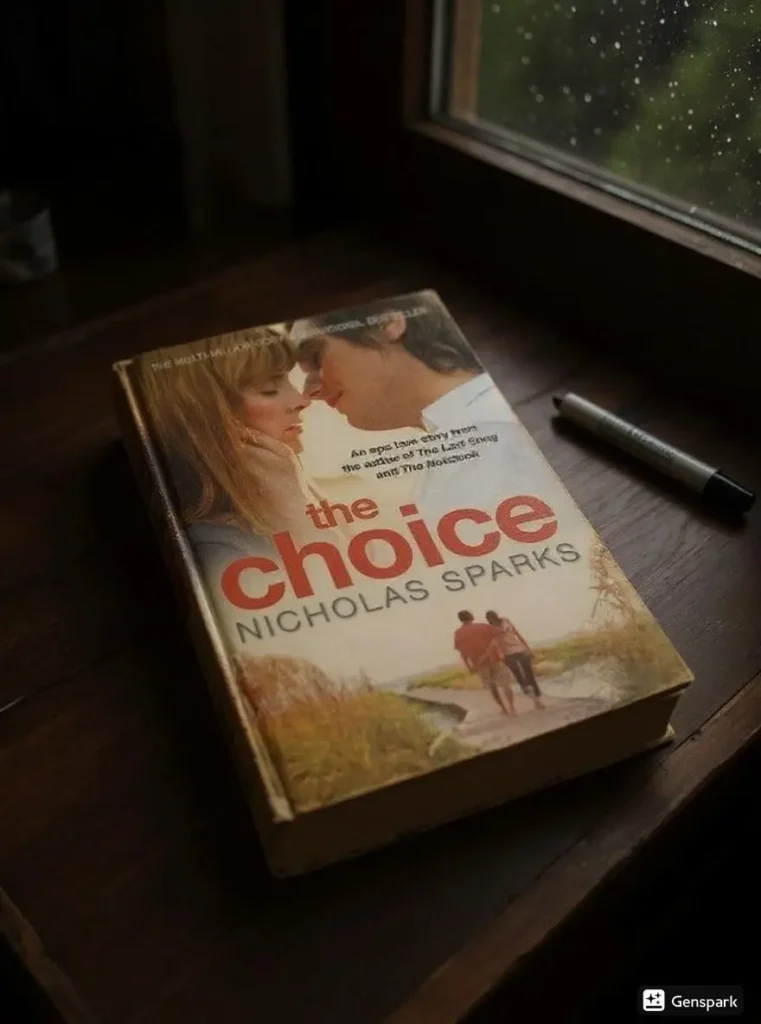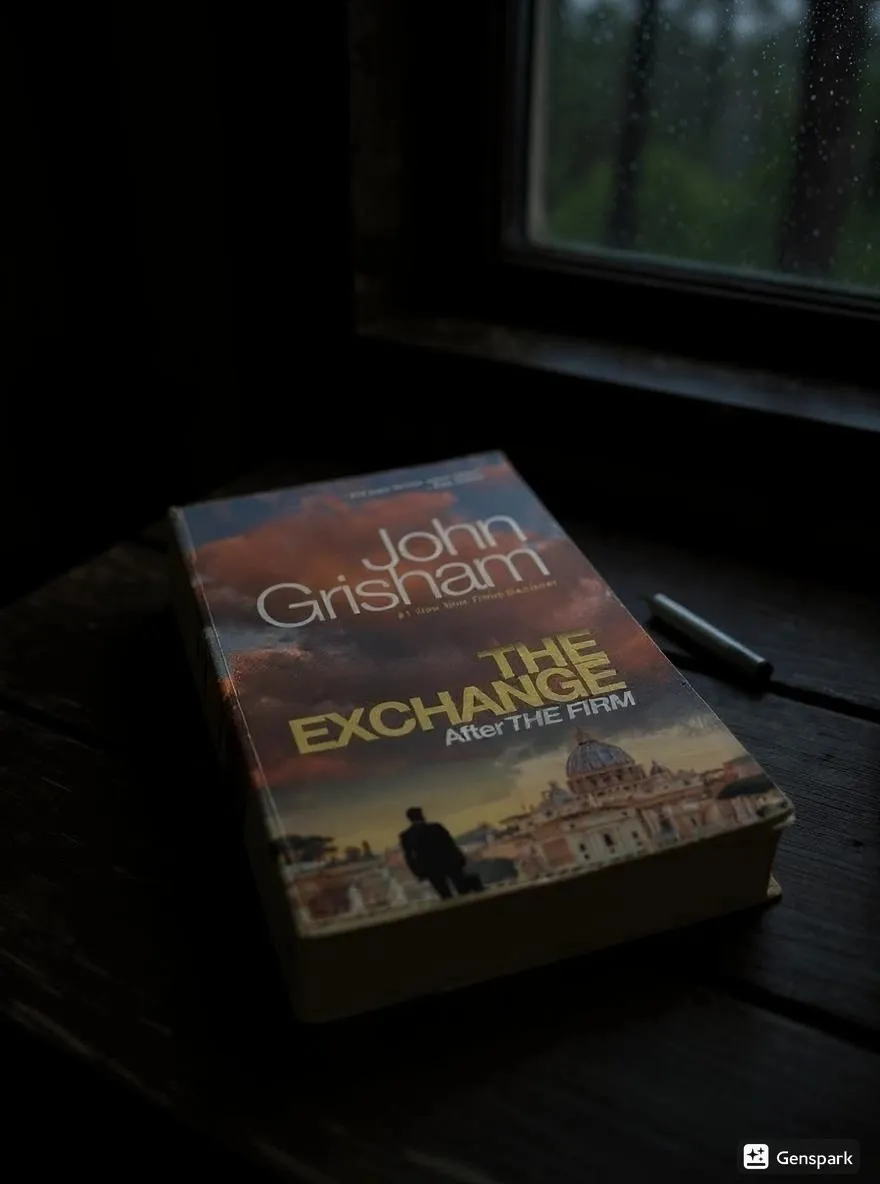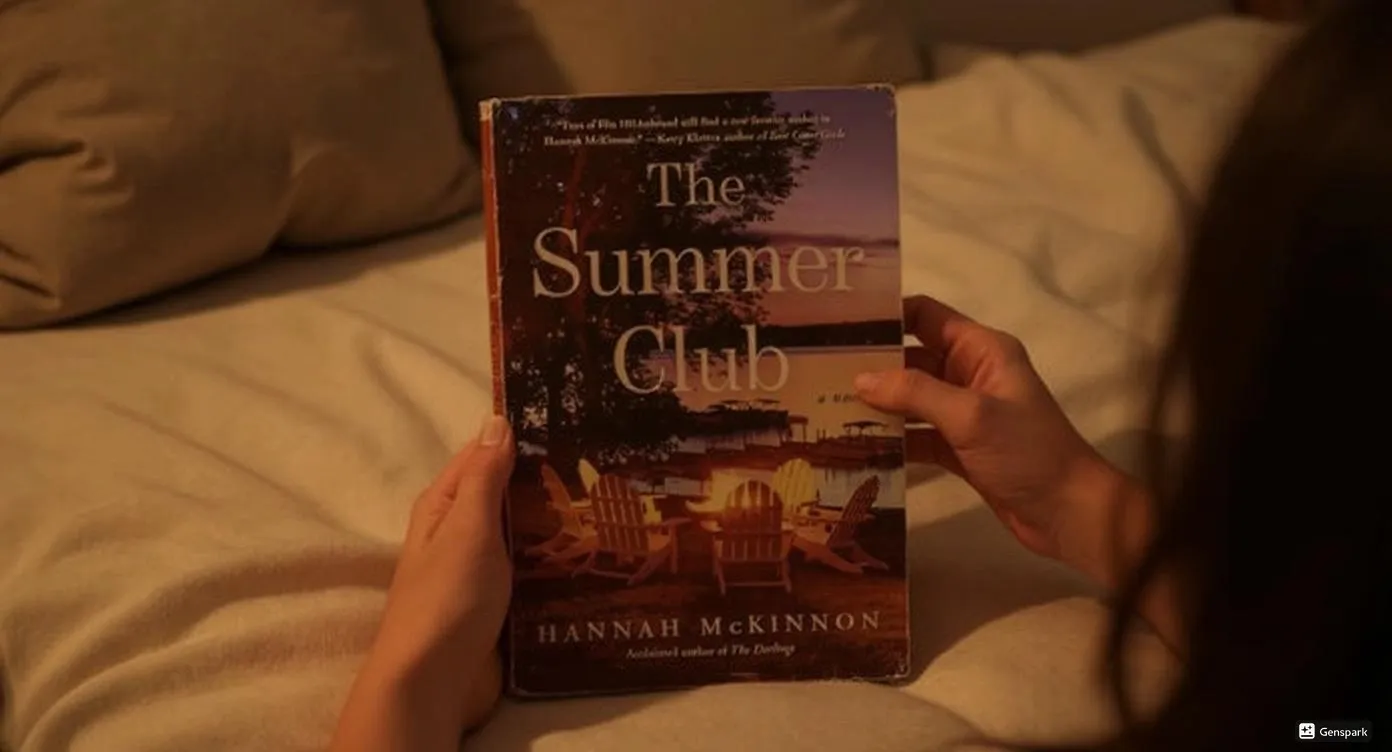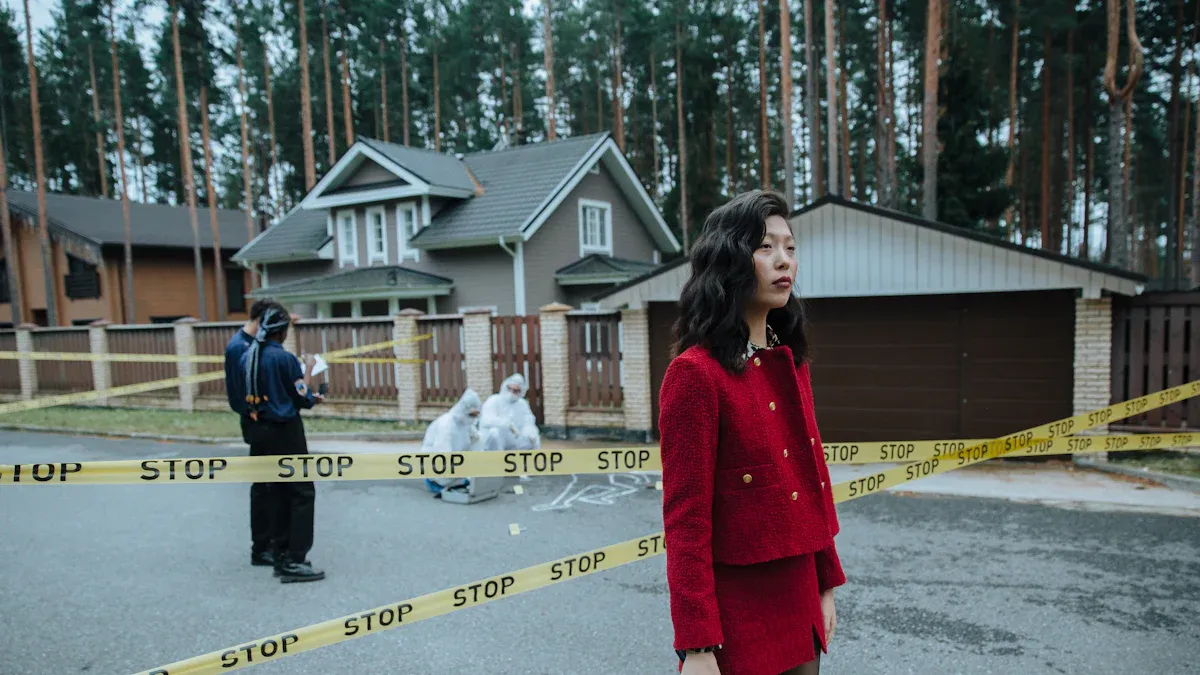I picked up “The Choice” on a rainy Sunday morning, expecting another predictable Nicholas Sparks romance. What I found was a gut-wrenching exploration of love’s most impossible decisions that left me questioning everything about commitment and sacrifice. After reading over 5,000 books in my two decades of reviewing, I can confidently say this novel stands apart from typical romance fiction with its brutal moral complexity.
The story follows Travis Parker, a carefree veterinarian living his dream life in coastal North Carolina, until Gabby Holland moves next door. Their initial attraction transforms into something deeper, but the real test comes eleven years later when Travis faces an unthinkable choice about Gabby’s life. This isn’t just another love story—it’s a meditation on the promises we make and the prices we pay for keeping them.
Sparks crafts a narrative that feels deceptively simple at first, then delivers a second-half punch that will leave you emotionally drained. The book succeeds in making readers confront uncomfortable questions about love, loss, and the weight of life-altering decisions. While some might find the setup formulaic, the payoff is genuinely heartbreaking and morally complex.
Key Takeaways
The power of seemingly small choices to reshape entire lives becomes devastatingly clear through Travis and Gabby’s story. Sparks masterfully demonstrates how one weekend can set the course for decades of love and eventual heartbreak.
Medical ethics and personal conviction collide in ways that will make you question what you’d do in Travis’s position. The book doesn’t provide easy answers, instead forcing readers to grapple with the moral complexity of end-of-life decisions.
Character development transcends typical romance stereotypes, particularly in how Travis evolves from a commitment-phobic bachelor to a man willing to sacrifice everything for love. His transformation feels authentic rather than contrived.
The two-part structure works brilliantly, with the first half establishing deep emotional investment before the second half tears it all apart. This pacing creates maximum emotional impact when the central choice arrives.
Contemporary romance can tackle serious themes without losing its heart, as evidenced by how Sparks balances lighthearted courtship with profound moral questions about love, sacrifice, and the meaning of commitment.
Basic Book Details:
- Publishing Information: September 2007 by Grand Central Publishing
- Genre: Contemporary Romance/Literary Fiction
- Plot: A love story spanning two decades, culminating in an impossible medical ethics decision
- Series Information: Standalone novel
- Page Count: 336 pages
- Main Characters: Travis Parker (veterinarian), Gabby Holland (physician’s assistant), Kevin Holland (Gabby’s boyfriend)
My Personal Reading Experience
I started reading “The Choice” during a quiet weekend in my cabin, surrounded by the kind of peaceful setting that mirrors the novel’s North Carolina coast. The first hundred pages had me convinced I was reading standard Sparks fare—charming but predictable. Then came the second half, and I found myself reading until 3 AM, unable to put it down despite knowing it would wreck me emotionally.
What struck me most was how the book’s title reveals its true meaning gradually. Initially, it seems to refer to Gabby choosing between Travis and her boyfriend Kevin. But the real choice—Travis’s impossible decision about keeping Gabby on life support—hits like a freight train. I’ve read thousands of romances, but few have made me physically uncomfortable with their moral complexity.
The book reminded me of my own experiences with family medical crises, making Travis’s anguish feel painfully real. Sparks doesn’t romanticize these decisions or provide neat solutions. Instead, he forces readers to sit with the discomfort of impossible choices, which is what makes this novel more than just another romance.
Literary Analysis
Sparks employs a deceptively simple prose style that masks the story’s emotional depth. His writing feels conversational yet precise, avoiding the flowery language that often plagues romance novels. The dialogue rings true, particularly in the scenes between Travis and his friends, where masculine camaraderie feels authentic rather than forced.
The two-part structure serves the story perfectly. Part One establishes the romantic foundation with enough detail to make readers invest emotionally in Travis and Gabby’s relationship. Part Two then uses that investment to maximum effect, making the central choice feel genuinely devastating. This structure prevents the book from becoming either a lightweight romance or a heavy-handed medical drama.
Setting plays a crucial role, with the North Carolina coast providing both idyllic romance backdrop and intimate space for private grief. Sparks uses the coastal environment to reflect emotional states—calm waters during happy times, storms during conflict. While occasionally heavy-handed, this technique generally works well.
The narrative voice maintains consistent first-person perspective from Travis, allowing readers to experience his emotional journey intimately. This choice proves particularly effective during the book’s climactic sections, where Travis’s internal struggle becomes viscerally real.
Character Development And Relationships
Travis Parker begins as a stereotypical commitment-phobic bachelor but develops into something more complex. His transformation from carefree veterinarian to devoted husband feels gradual and believable. Sparks avoids the common romance trap of making male protagonists too perfect, giving Travis realistic flaws and genuine character growth.
Gabby Holland emerges as more than just a romantic interest, though her characterization sometimes feels secondary to Travis’s journey. Her intelligence and independence shine through their early interactions, and her medical background adds authenticity to the story’s later medical scenes. The supporting cast, particularly Travis’s friends, provides realistic masculine friendship dynamics.
The relationship between Travis and Gabby develops naturally, avoiding the instalove trap common in romance novels. Their conflicts feel genuine rather than manufactured, and their compatibility stems from shared values rather than just physical attraction. The eleven-year time jump allows Sparks to show their relationship’s maturation without dwelling on every detail.
Kevin Holland, Gabby’s initial boyfriend, could have been a cardboard villain but instead comes across as a decent man caught in an impossible situation. This nuanced portrayal adds to the story’s moral complexity, making Gabby’s initial choice genuinely difficult.
Themes And Moral Complexity
The central theme of choice permeates every aspect of the novel, from Gabby’s initial decision between two men to Travis’s ultimate choice about her life. Sparks explores how our choices define us and how love sometimes requires impossible decisions. The book refuses to provide easy answers, instead asking readers to consider what they would do in similar circumstances.
Medical ethics receives thoughtful treatment, particularly regarding end-of-life care and the rights of family members to make decisions for incapacitated loved ones. Sparks presents multiple perspectives without taking obvious sides, allowing the moral complexity to speak for itself. The book raises questions about quality of life, hope, and the point at which love becomes selfish.
The nature of commitment gets thorough examination, especially through Travis’s evolution from bachelor to devoted husband. The story suggests that true love requires sacrifice and that the depth of commitment is tested only in extreme circumstances. This theme resonates throughout both halves of the novel.
Faith and spirituality appear subtly but meaningfully, particularly in how characters cope with tragedy. Sparks doesn’t preach but acknowledges the role of faith in facing life’s hardest moments. This spiritual dimension adds depth without overwhelming the narrative.
Writing Style And Narrative Structure
Sparks’s prose style remains accessible throughout, avoiding both overly literary pretension and romance novel clichés. His sentences flow naturally, creating an easy reading experience that masks the story’s emotional complexity. The author demonstrates particular skill in dialogue, making conversations feel authentic rather than stilted.
The novel’s pacing builds expertly, with the first half moving at a leisurely pace that allows relationship development, while the second half accelerates toward its emotional climax. This pacing choice serves the story well, giving readers time to invest in the characters before subjecting them to heartbreak.
Flashback sequences integrate smoothly into the narrative, providing necessary backstory without disrupting the forward momentum. Sparks handles time transitions skillfully, making the eleven-year jump feel natural rather than jarring. The alternating focus between past and present creates effective dramatic tension.
The author’s use of foreshadowing proves particularly effective, with early hints about the story’s tragic turn creating subtle unease that pays off powerfully later. These hints never feel heavy-handed but add richness to second readings.
| Aspect | Rating | Comments |
|---|---|---|
| Character Development | 7/10 | Travis shows genuine growth; Gabby less developed |
| Plot Structure | 8/10 | Two-part structure works brilliantly |
| Emotional Impact | 9/10 | Devastating in the best possible way |
| Writing Quality | 6/10 | Clean, accessible prose without flourishes |
| Thematic Depth | 8/10 | Serious moral questions elevate the material |
Genre Positioning And Comparative Analysis
Within Nicholas Sparks’s bibliography, “The Choice” represents a mature work that balances his trademark romanticism with serious moral questioning. It lacks the sentimentality of “A Walk to Remember” but shares the emotional devastation of “The Notebook.” The book feels more grounded than some of his earlier works, with characters facing realistic rather than melodramatic challenges.
Compared to contemporary romance generally, “The Choice” stands out for its willingness to grapple with difficult subjects. While many romance novels end with weddings, this one begins after marriage and explores what happens when love faces its ultimate test. This approach sets it apart from typical genre expectations.

The medical ethics subplot aligns the novel with literary fiction that explores moral complexity, placing it alongside works like Jodi Picoult’s novels. However, Sparks maintains the emotional accessibility that makes his work appealing to general audiences rather than just literary readers.
The book’s exploration of masculine grief and decision-making provides a perspective often missing from romance novels, which typically focus on female emotional experiences. This male-centered viewpoint adds dimension to the genre while remaining emotionally authentic.
| Comparison Point | The Choice | The Notebook | A Walk to Remember |
|---|---|---|---|
| Emotional Impact | High | Very High | Very High |
| Moral Complexity | High | Medium | Medium |
| Character Development | Good | Excellent | Good |
| Realistic Relationships | High | Medium | Low |
Target Audience And Reader Recommendations
“The Choice” will appeal most to readers who enjoy character-driven romance with serious themes. Those seeking light, escapist romance might find the second half too emotionally demanding. The book works best for readers comfortable with moral ambiguity and tragic elements in their love stories.
Adult readers with life experience, particularly those who have faced family medical crises, will connect most deeply with the story’s themes. The book’s treatment of marriage and long-term commitment makes it particularly relevant for readers in established relationships rather than young adults seeking first-love stories.
Fans of Nicholas Sparks will find familiar elements—small-town settings, tragic romance, moral dilemmas—but should prepare for a more complex emotional journey than some of his earlier works. The book rewards readers willing to engage with its moral questions rather than just its romantic elements.
Book clubs will find plenty to discuss, particularly regarding the ethics of Travis’s ultimate decision and what readers would do in similar circumstances. The novel’s themes of choice, commitment, and sacrifice provide rich material for group discussion.
Pros
The emotional authenticity of Travis’s grief and decision-making process feels genuine rather than manipulative. Sparks avoids cheap emotional tricks, instead building devastating impact through careful character development and realistic relationship dynamics.
The moral complexity elevates the material beyond typical romance fare, asking serious questions about love, sacrifice, and the limits of commitment. The book doesn’t provide easy answers, respecting readers’ intelligence and emotional maturity.
Character development, particularly Travis’s evolution from bachelor to devoted husband, feels gradual and believable. His flaws and growth create a three-dimensional protagonist rather than a romance novel fantasy.
The two-part structure creates maximum emotional impact by establishing deep reader investment before delivering the story’s tragic turn. This pacing choice serves the story perfectly, making the climax genuinely devastating.
The book’s treatment of masculine emotion and decision-making provides a perspective often missing from romance novels, adding depth and authenticity to the genre.
Cons
The setup, while effective, follows predictable Nicholas Sparks patterns that some readers might find formulaic. The small-town setting, commitment-phobic male protagonist, and tragic twist follow his established template closely.
Gabby’s characterization, while adequate, sometimes feels secondary to Travis’s emotional journey. Her personality and motivations could have been developed more fully to balance the narrative perspective.
Some supporting characters, particularly Travis’s friends, occasionally feel like plot devices rather than fully realized people. Their dialogue sometimes serves exposition more than authentic character interaction.
The medical details, while generally accurate, occasionally feel researched rather than lived. Some readers with medical experience might find certain aspects less convincing than others.
The book’s emotional manipulation, while skillfully executed, might feel excessive to readers seeking more subtle emotional storytelling. The tragic elements, though well-integrated, follow familiar patterns.
Reading Experience And Accessibility
The book offers an accessible reading experience with clear prose and straightforward narrative structure. Most readers can complete it in a single sitting, though the emotional intensity might require breaks during Part Two. The medical terminology remains understandable to general audiences.
Content warnings include discussion of life support decisions, medical procedures, and character death. The book deals with heavy themes that might be triggering for readers who have faced similar family medical crises. However, the treatment remains respectful and non-graphic.
The straightforward narrative structure translates well across mediums, though the emotional impact might be intensified in audiobook format.
Reading difficulty remains moderate, suitable for high school age and above. The themes, however, will resonate most with adult readers who have life experience with long-term relationships and family responsibilities.
Final Verdict
“The Choice” succeeds as both romance and moral exploration, asking serious questions about love’s limits while delivering genuine emotional impact. The book’s two-part structure works brilliantly, creating investment before delivering devastation. While it follows some familiar Nicholas Sparks patterns, the moral complexity elevates it beyond typical genre fare.
The novel’s greatest strength lies in its willingness to grapple with impossible choices without providing easy answers. Travis’s decision about Gabby’s life feels genuinely agonizing because Sparks has invested the time to make their relationship matter. This emotional authenticity sets the book apart from more manipulative romance novels.
Character development, particularly Travis’s evolution from bachelor to devoted husband, provides the foundation for the story’s emotional impact. His growth feels gradual and believable, making his ultimate choice more devastating. The supporting characters, while sometimes underwritten, serve their purposes adequately.
The book’s treatment of medical ethics adds depth that contemporary romance often lacks. Rather than using tragedy for cheap emotional effect, Sparks explores the real moral complexity of end-of-life decisions. This approach respects readers’ intelligence while delivering powerful emotional impact.
For readers seeking romance with substance, “The Choice” delivers both heart and heartbreak in equal measure. The book rewards emotional investment with genuine catharsis, though readers should prepare for an emotionally demanding experience. Despite some familiar elements, the moral complexity and authentic emotion make this a standout work in Sparks’s catalog.
Dionysus Reviews Rating: 7.5/10
Sip The Unknown—Discover Stories You Never Knew You’d Love!
Dionysus Reviews Has A Book For Every Mood
Biography & Memoir
Fiction
Mystery & Detective
Nonfiction
Philosophy
Psychology
Romance
Science Fiction & Fantasy
Teens & Young Adult
Thriller & Suspense
Frequently Asked Questions
What makes Travis Parker’s character development more authentic than typical romance heroes?
Travis’s evolution from commitment-phobic bachelor to devoted husband happens gradually over eleven years rather than in a few weeks. His flaws remain visible throughout the story—he’s sometimes selfish, makes mistakes, and struggles with difficult decisions. Unlike idealized romance heroes, Travis feels like a real person who grows through experience rather than magical transformation.
How does the book’s two-part structure affect the emotional impact?
The first part establishes deep emotional investment in Travis and Gabby’s relationship through detailed courtship and early marriage scenes. This foundation makes Part Two’s tragic elements genuinely devastating rather than merely sad. Readers experience the full weight of Travis’s impossible choice because they’ve witnessed the love story that makes it so painful.
Does the medical ethics subplot feel authentic or researched?
The medical aspects generally feel well-researched and authentic, particularly the emotional rather than technical details. Sparks focuses more on the human impact of medical decisions than clinical specifics, which works well for the story. Some medical professionals might find certain details less convincing, but the emotional authenticity of facing such decisions rings true.
How does this compare to Nicholas Sparks’s other novels in terms of emotional intensity?
“The Choice” ranks among Sparks’s most emotionally intense works, comparable to “The Notebook” but with more moral complexity. The tragic elements feel more integrated into the story rather than added for effect. The book’s willingness to grapple with impossible choices without easy answers makes it emotionally demanding in a more mature way than some of his earlier works.
What should readers expect from the book’s handling of grief and loss?
The book treats grief as a complex, ongoing process rather than a problem to be solved. Travis’s emotional journey through loss feels authentic and unpredictable, avoiding both toxic positivity and wallowing in despair. Readers who have experienced similar losses will likely find the portrayal realistic and respectful, though potentially triggering.









